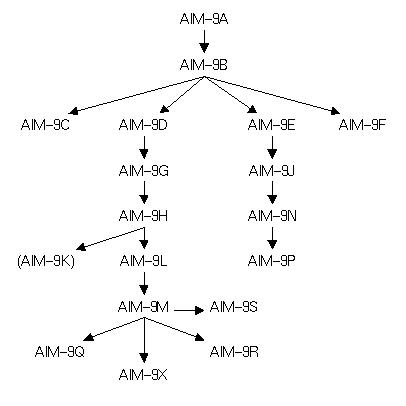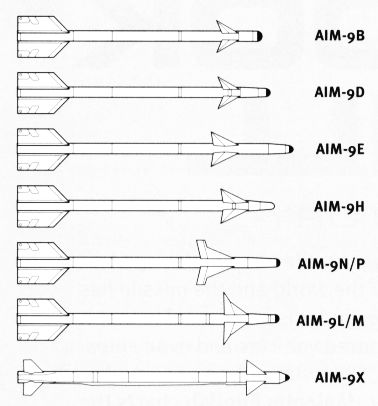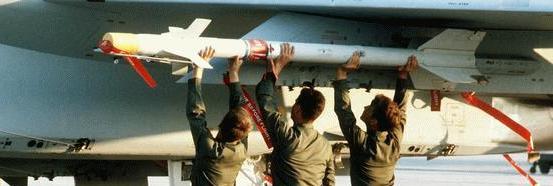cicloneprojekt escreveu:Senhores, brevemente isso tudo que está sendo discutido irá virar sexo dos anjos. O MAA-1B está a caminho. E vindo rápido.
Sim, claro. O MAA-1B é muito melhor do que qualquer AIM-9G/H/P4/P5.
Mas só para complementar o que o Lima já esclareceu.


Another Navy variant was the AIM-9G, an improved AIM-9D. It featured SEAM (Sidewinder Expanded Acquisition Mode), which allowed the optics either to be slewed through a search pattern, or to be slaved to the aircraft's radar to acquire a target. 2120 AIM-9G were built by Raytheon from 1970 to 1972. Equivalent to ATM-9D, there was also an ATM-9G training version of the AIM-9G.
The Sidewinder was of course used extensively over Vietnam by both the USAF and the Navy. The Air Force scored 28 AIM-9 air-to-air kills using the AIM-9B/E versions, achieving a kill probability for this missile of about 16%. The USN's most successful Sidewinder variants in Vietnam were the AIM-9D and -9G, which were resposible for the majority of USN air-to-air kills in this conflict. A total of 82 air-to-air kills over Vietnam are attributed to the AIM-9.
To increase the reliability of the AIM-9G, the Navy developed the AIM-9H. The main difference to the AIM-9G were solid-state electronics in the guidance and control system. The seeker tracking rate was also increased to 20°/s to complement the more powerful actuators. Only a few AIM-9Hs were fired over Vietnam, but they were credited with a higher kill rate than any other AIM-9 version in Vietnam. About 7700 AIM-9Hs were produced by Philco-Ford and Raytheon between 1972 and 1974. The ATM-9H was a training version for captive flight target acquisition.

AIM-9J/N/P (exact model unknown)
The USAF's AIM-9J was an improved AIM-9E. It had partial solid-state electronics, a longer-burning gas generator (increasing flight time), and more powerful actuators which drove new square-tipped double-delta canards. The latter feature doubled the single-plane "G"-capability of the missile. About 10000 AIM-9Js were eventually built from 1972 on, mostly by converting existing AIM-9B/E missiles.
The AIM-9P is a USAF-sponsored development of AIM-9J/N,
mainly intended for export to countries which can't afford, don't need, or are not allowed to receive the AIM-9L/M. The AIM-9P-1 introduced the DSU-15/B AOTD laser proximity fuze, and the AIM-9P-2 adds a reduced-smoke rocket motor. The AIM-9P-3 has the reduced-smoke motor, a new insensitive munitions warhead, and an improved guidance and control section. Some sources say the -9P-3 retains the original IR fuze of the AIM-9J, while others say that it also uses the new DSU-15/B like the -9P-1. The designation AIM-9P-4 applies to variants with an ALASCA seeker using some of the technology of the AIM-9L/M, and the AIM-9P-5 adds improved IRCCM. Externally, the AIM-9P remains almost identical to the AIM-9J/N. More than 21000 AIM-9Ps have been built so far, many being rebuilt AIM-9B/E/J missiles.
Although originally intended for export only, many AIM-9Ps are in the USAF inventory.












